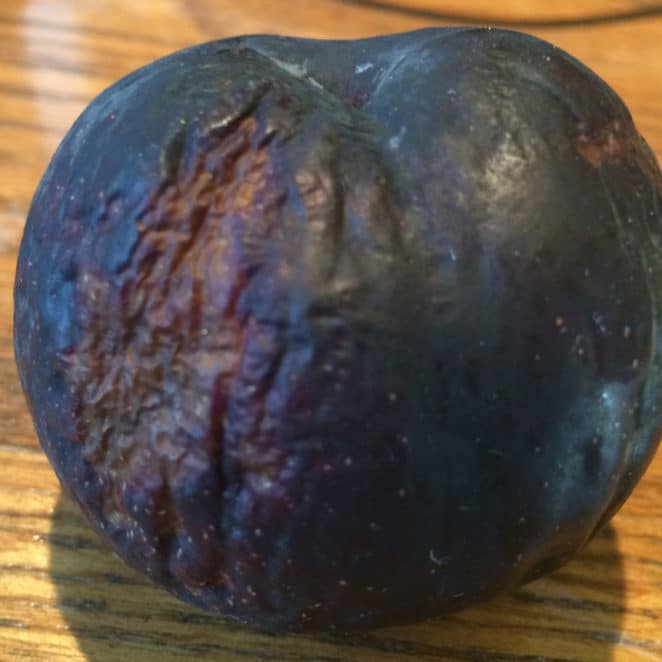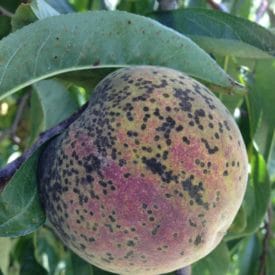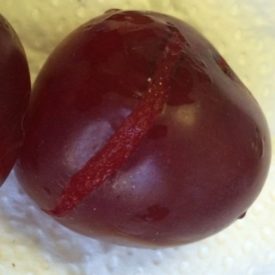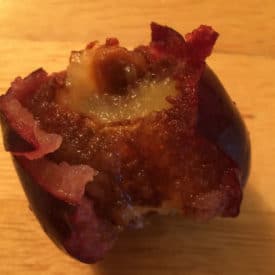
What you see: Rough, pockmarked plum skin with sunken areas
What it is: Dehydration and pitting probably caused by poor storage; this plum may have also suffered a bruise that left it flattened
Eat or toss: The plum isn’t unsafe, but probably won’t taste very good
What makes a plum look shriveled and rough?
Chances are, this plum was neglected.
After harvest, it may have sat in storage for a long time, probably in a place where the temperature was too cold and the humidity too low. The moisture keeping the fruit taut and juicy started to escape.
This poor fruit may have also been under the weight of other hapless plums, causing part of it to flatten. Or, it could have been roughed up as it shuffled along, from harvest bag to packing house to grocery store.
At some point, the plum started pitting, too. That simply means that some cells collapsed, creating sunken areas as they gave up. Cold temperatures can mess with cell membranes and cell walls, causing pitting and other problems.
So, can you eat a plum with rough, bumpy, shriveled skin?
None of this means that the plum is unsafe, but its texture will likely be dry and mealy. Its inner flesh will probably be brown, the consequences of cells losing their plump and breaking down.
It’s tricky extending shelf life and preventing cold damage
Fully grown plums, like other fruits from temperate climates, simply aren’t equipped for long stretches at very low temperatures. This creates a conundrum for growers and shippers because, despite causing problems like those afflicting this plum, cold storage can help extend the life of a plum; keeping the temperature low delays rotting and pathogen growth.
But fortunately, spending a short time at a low temperature won’t necessarily trigger problems for many fruits. And, oddly, temperatures around freezing can do less damage than those closer to household refrigerator temps. So, farmers and produce managers can use specific temperatures for specific periods to time to maximize shelf life. But, making it still more complicated is the fact that symptoms of chilling injury often don’t become apparent until the fruit has warmed up to room temperature. So, fruit sellers just have to use best practices and cross their fingers that they got it right.
Macarena Farcuh, an assistant professor of horticulture at the University of Maryland, notes that cold-temperature-induced pitting can show up in cherries as well (your cherries might have little pockmarks, as in these images from the University of California, Davis). Such cherries are OK to eat, but may not taste as good as smoother skinned fruit.
Ultimately, when it comes to eating a rough-looking plum like this, Farcuh said: “It’s safe. But it’s not going to be very pleasant.”
SOURCES:
- Dr. Macarena Farcuh, Ph.D. Assistant professor in horticulture. College of Agriculture and Natural Resources. University of Maryland.
- Physiological Disorders. Book chapter made available by the Institute of Food and Agricultural Studies at the University of Florida.
- Fruit Ripening & Ethylene Management Workshop: Cold Storage Disorders of Fruits and Vegetables. Slide deck by Mikal E. Saltveit. Department of Plant Sciences. University of California, Davis. 2017.











